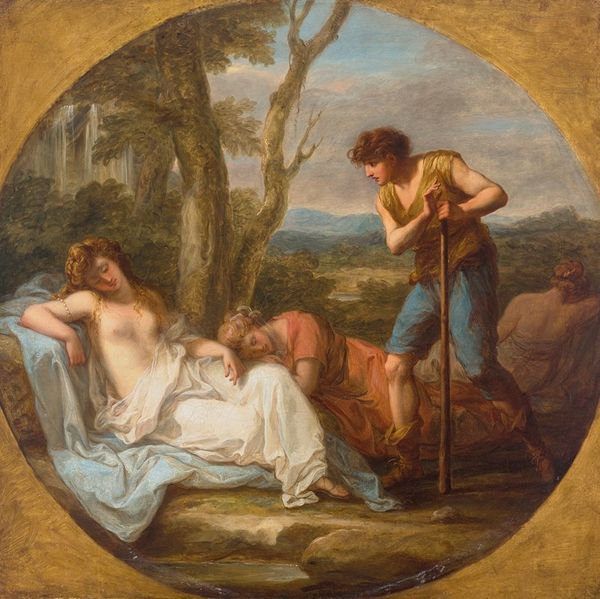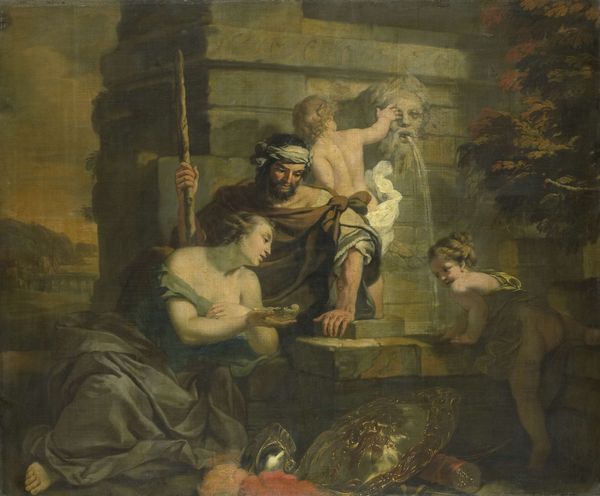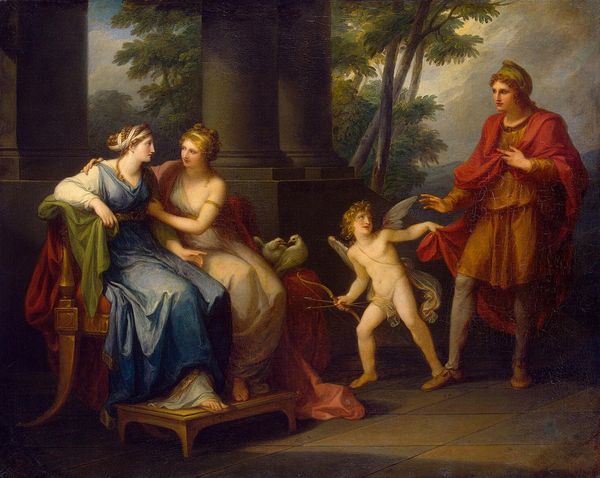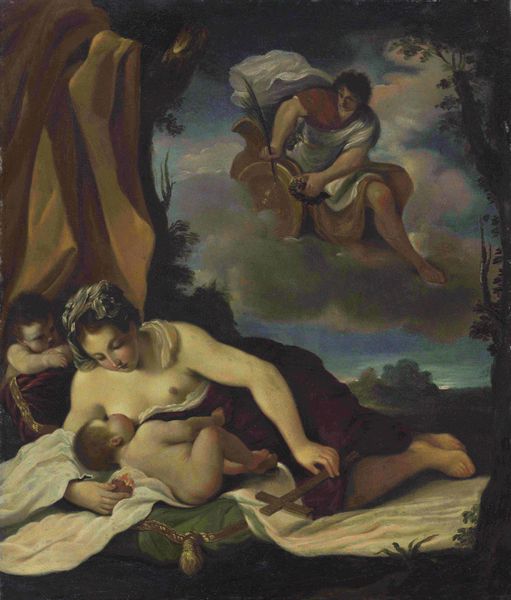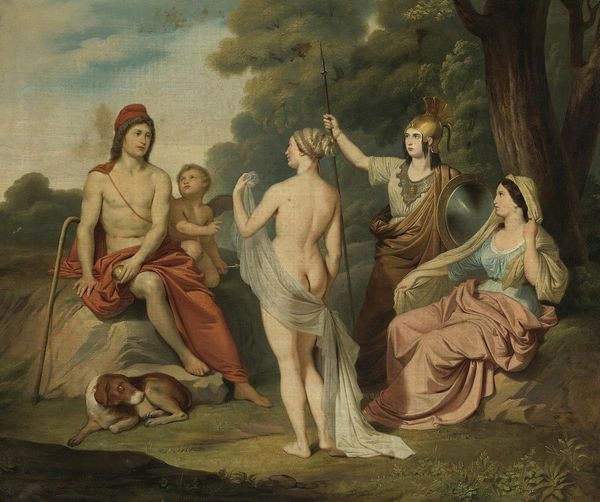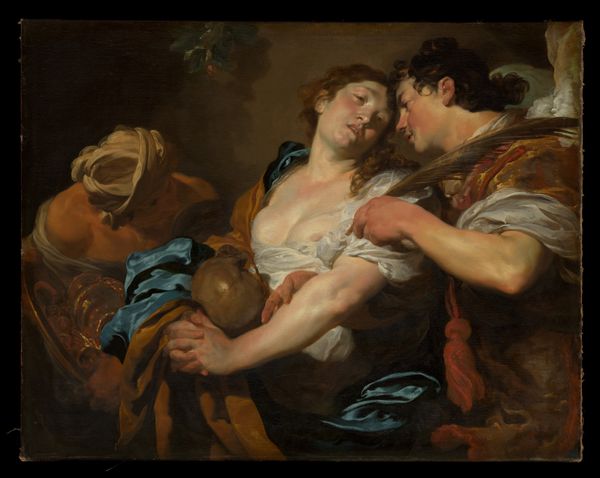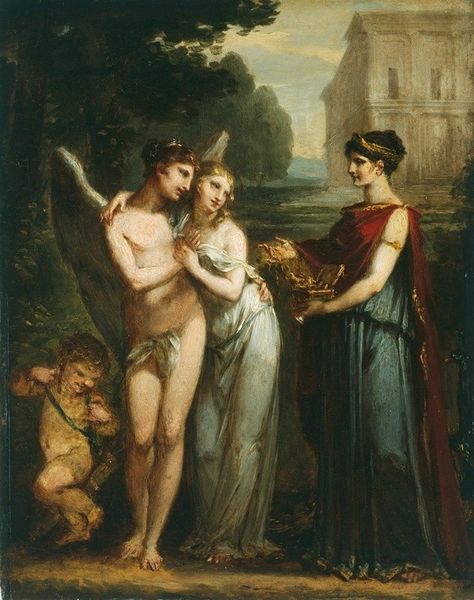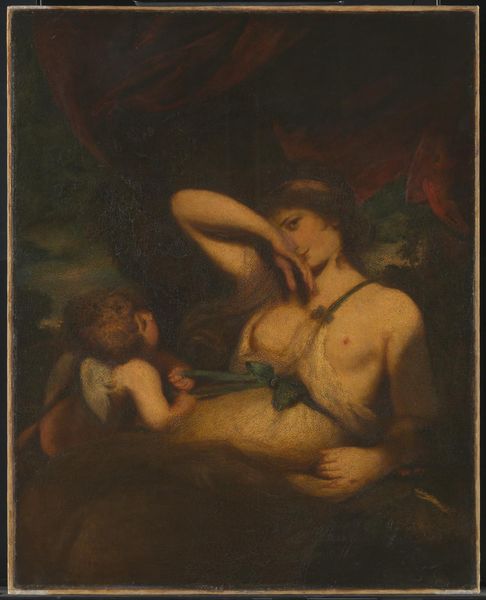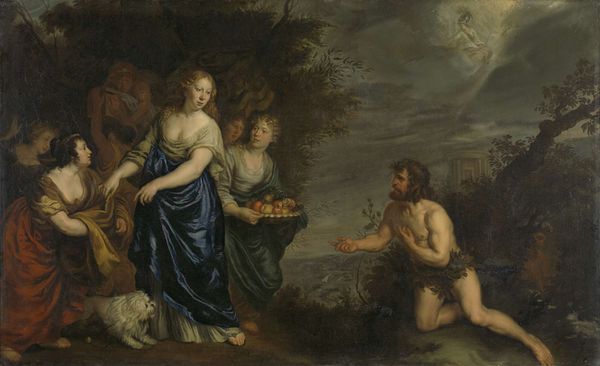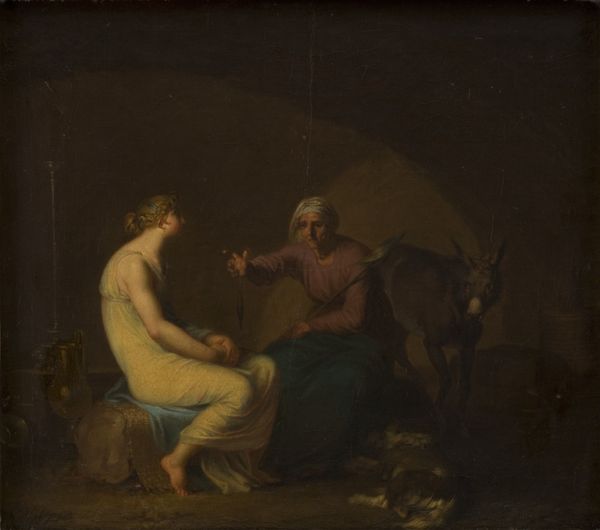
Apollo charging the Parcae to visit Ceres, who has fled from the Earth 1809
0:00
0:00
Dimensions: 47.5 cm (height) x 48 cm (width) (Netto), 57.6 cm (height) x 57.6 cm (width) (Brutto)
Curator: Examining "Apollo charging the Parcae to visit Ceres, who has fled from the Earth" painted in oil in 1809 by Nicolai Abildgaard. Editor: This artwork presents a classical scene bathed in warm, subdued light. The figures seem frozen, their gestures both grand and delicate. It feels quite staged, almost like a tableau. What draws your eye to this particular piece? Curator: Well, look at the materiality, right? It's oil paint, built up layer by layer. Abildgaard, working in the Baroque tradition, uses it to simulate classical ideals. What social and material conditions enable a patron class to support a history painting in oil, versus a fresco? How does that impact consumption of art? What does producing this "classical" art do to contemporary artisans' status and livelihoods? Editor: That's a side I hadn't considered! So, you're saying the *materials* and the process are deeply embedded in economic structures? How might knowing that reshape our understanding of the depicted figures and their myth? Curator: Exactly! Consider the availability of pigments in 1809. Where did they come from? How did the processes of resource extraction and trade networks influence the colour palette? Editor: And perhaps understanding that Apollo's "divine command" is reliant on a complex network of labor. The seemingly effortless art masks production challenges that are at work beneath it. Curator: Yes, challenging that separation of art and production transforms it all. What seems transcendent is revealed to be inherently physical, created. This forces us to reconsider the art object itself. Editor: Thanks. Thinking about art this way, as connected to production, really reframes how I view it. I will look at things differently now!
Comments
No comments
Be the first to comment and join the conversation on the ultimate creative platform.


